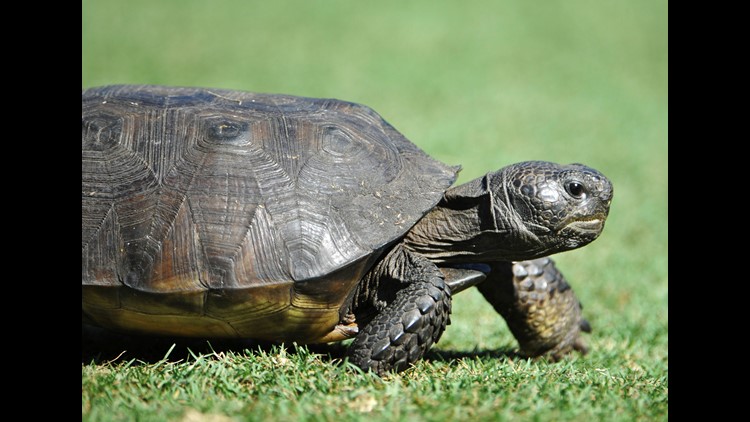ST. PETERSBURG, Fla. — Gopher tortoises imperiled by loss of habitat largely caused by human development should be placed on the endangered species list in four southern states, environmental groups said Wednesday as they prepared to sue the federal government over the issue.
The Center for Biological Diversity and Nokuse Education filed a notice of intent to sue the U.S. Fish and Wildlife Service over its decision last year not to list the gopher tortoise as endangered or threatened in Florida, Georgia, South Carolina and eastern Alabama.
The center noted there are some state-level protections for the burrowing tortoises but those generally require the animals to be moved from a development site and do not protect their habitat overall. The tortoises have lost 97% of the longleaf pine savannas where they lived for millions of years in the South.
“Without lifesaving Endangered Species Act protection for our gopher tortoises, urban sprawl will keep driving them ever closer to extinction,” said attorney Elise Bennett, the center's Florida director.
The Fish and Wildlife Service has projected that 75% of the current gopher tortoise population will be lost by 2100. The burrows they dig with shovel-like front legs, which can extend 30 feet (9 meters) underground, also support an estimated 360 other species that use them.
The tortoises are listed as endangered in parts of Louisiana, Mississippi and western Alabama but efforts to list them in their eastern range have proved futile.
The Fish and Wildlife Service concluded in October 2022 that “the risk factors acting on the gopher tortoise and its habitat, either singly or in combination, are not of sufficient imminence, scope, or magnitude” to warrant threatened or endangered status. That decision led to the pending lawsuit.
Gopher tortoises once inhabited more than 92 million acres (37 million hectares) of land in the southeastern U.S. but now have only a fraction of that space due to human development, agriculture, climate change, invasive species and other issues, according to the center's lawsuit notice.
They can live up to 80 years but reach reproductive age slowly.
The Fish and Wildlife Service declined to comment.
► Get breaking news from your neighborhood delivered directly to you by downloading the new FREE WWL-TV News app now in the IOS App Store or Google Play.



